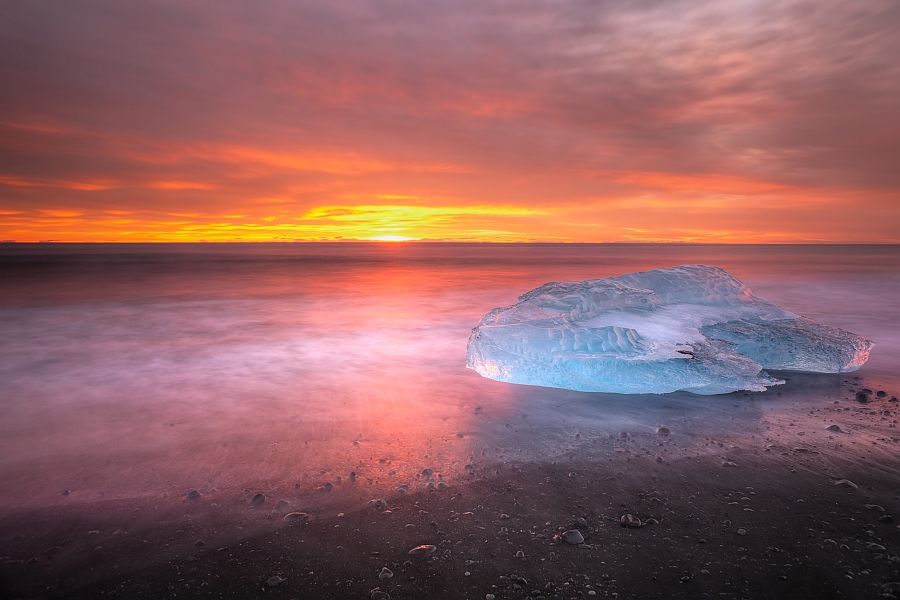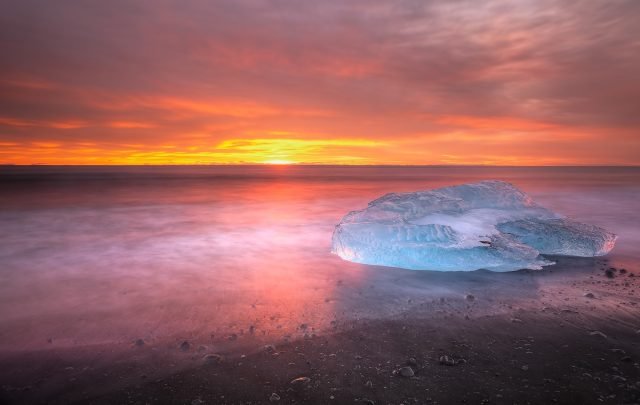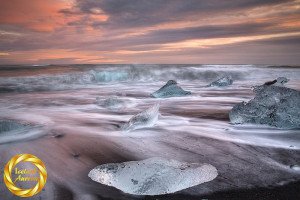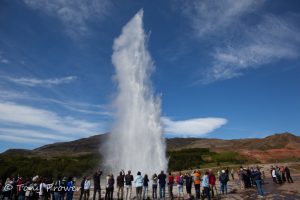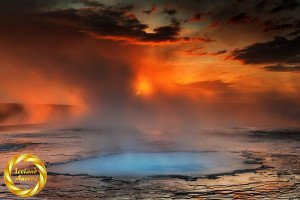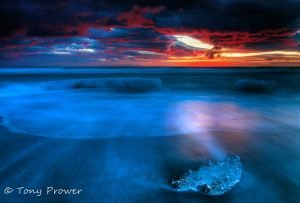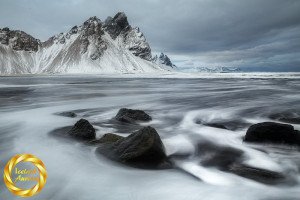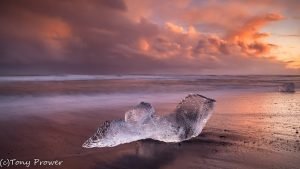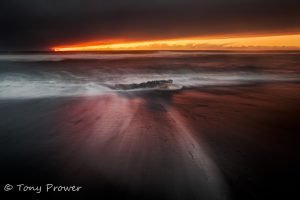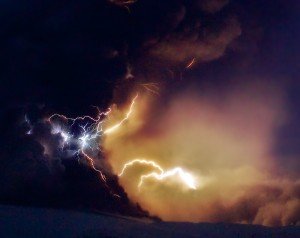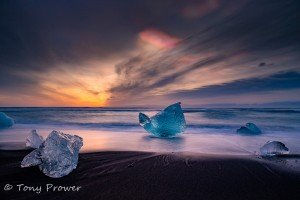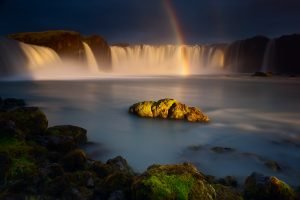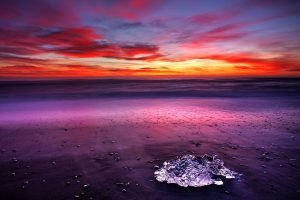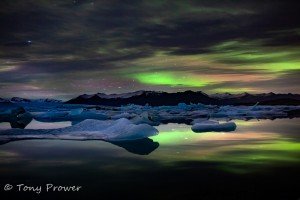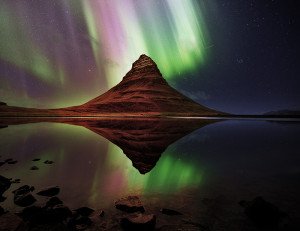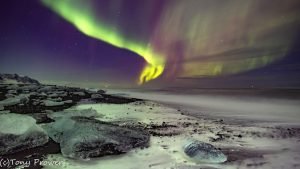Background
I took this nature photo early in December on a day tour to Jökulsarlon Glacier Lagoon. We had driven from Reykjavik to Jökulsarlon very early. We parked the car and could see that a good sunrise was developing, but there was very little ice on the beach. I spotted this larger chunk, maybe half a mile up the beach, and just started running towards it. My customers also started running.
Buy this photo as a print in the Galleries.
As there was only one piece of ice, we all got similar shots. One of my customers got on the front page of Bing and also sold a few as framed prints.
Small Group Ice Caving
Composition
This was really a simple case of balancing the elements. The version you see here has been cropped to 16:9 aspect ratio. I cut out a part of the black/grey sand to allow the colour elements to fill the frame. But when I was composing, I didn’t know how the waves would behave, so I covered that area in my frame anyway.
In a basic sense, I am just as close to the ice chunk as I feel comfortable. There aren’t many elements in the scene. I simply placed the Ice on the far right with enough space at the edges. Then balanced the ice with the sun. They are fairly close to the third intersections following the rule of thirds.
Details
- Taken on Dec 5, 2010
- Location: Jökulsarlon Ice beach.
This was on the West side of the diamond beach. The beach consists of black sand and black pebbles. Both of these give a dark canvas for the glacier ice. The different textures behave different in the morning light and the behaviour of the receding waves is different. Early December sunrises last a long time. The colours here were good for around an hour of shooting.
Camera Gear
- Canon EOS 5D Mark III
- EF24mm f/1.4L II USM
- Medium weight Gitzo
- 6 stop B&W ND filter
- Magic Cloth = Black Winter glove.
Magic Cloth It!!
Under normal conditions, the top section of a coastal scene is much brighter than the lower half. To be able to get the very best exposure of both the skies and the land, filters that are darker at the top & clear at the bottom have been traditionally employed by photographers. These are called Graduated Filters. They are available in different colours, but the most well-known are Neutral-Density. Neutral density adds no colour to the scene. Graduate filters come in different strengths quantified in stops. They are also available soft or hard gradients.
The Magic Cloth Technique achieves similar results by using a cloth to cover parts of the scene during a long exposure. During a long exposure of around 10 seconds or more, the sky is covered quickly allowing extra exposure on the lower half of the image.
Settings
Exposure time
It is preferable to work with a long Exposure time. Start with a dark filter or low light for a to achieve a long exposure, then over expose the photo by 2 – 3 stops. 2-5 seconds requires a quick, but controlled action to cover the sky within a reflex time. 5-10 seconds allows for a controlled exposure of the foreground.
ND (Neutral-Density) Filters
An N D filter is dark all over it affects the whole scene unlike a Graduated filter. The N D filter is only to lengthen the exposure. Without needing to wait for it to get dark. You can get nice wave activity or milky waterfalls. My advice will be to purchase a filter for your biggest lens so you can utilize the same filter on all of your lenses by simply using a step up ring.
Procedure
Divide absolute exposure by 10 for the sky exposure. For example, a-10 second exposure would be a sky that is 1 second. Let 1 sec for the sky when the shutter opens. Immediately lower the cloth to cover the entire lens, then carefully lift the cloth to the level of the horizon. Don’t let the cloth become still during the exposure. This should give you a truly nice exposure on the immediate foreground without burning out the sky & highlights.
Equipment
Be sure to choose the right equipment for Magic Cloth photography. A lens with a large= element is essential, I get poor results with lenses lower than 62mm filter thread. The larger the lens element, the truer the cloth shadow. Lenses can be so wide, such as the Nikkor 14-24mm. The lens is fantastic for long exposures at night, but dark filters for day time Long Exposure photography becomes complicated.
This photo can be purchased in the shop…
